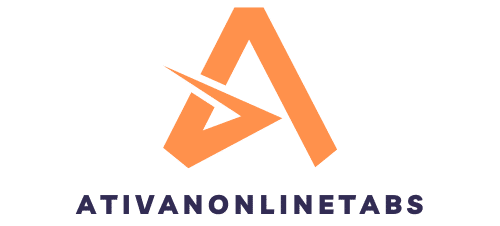In today’s fast-paced, technology-driven world, the classroom environment is constantly evolving. Traditional chalkboards and textbooks are giving way to interactive whiteboards and tablets. Google scholar is becoming a go-to reference for students and teachers alike, and data is being used to personalize education and promote student success. But how can you, as teachers, harness these technologies to create a smart, personalized learning environment in your classrooms? In this article, we’ll explore how to effectively integrate technology in the classroom, the importance of a smart design for your digital classroom, and how to utilize data to enhance student learning.
Transforming the Classroom with Technology
As teachers, you may wonder why technology is essential in the classroom. Well, the answer is simple. Technological tools have the power to transform the traditional classroom into a dynamic learning environment. By integrating technology, you can create a classroom that engages students, fosters critical thinking, and enhances their learning experiences.
Cela peut vous intéresser : How Is Artificial Intelligence Influencing the Development of Eco-Friendly Cars in the UK?
One key to a successful technology integration is variety. Don’t stick to just one type of technology. Mix it up. Use Google tools for education, educational apps, interactive whiteboards, tablets, and more. These tools not only make learning more engaging for students but also make teaching easier and more effective for you.
Another important aspect is ensuring that technology is used to enhance learning, not merely replace traditional teaching methods. For example, instead of just using a tablet to read a textbook, use it to explore interactive simulations, conduct experiments, or collaborate on projects with other students.
Dans le meme genre : What’s the Role of Citizen Science in Monitoring UK Air Quality?
Creating a Smart Classroom Design
A well-designed classroom can significantly impact learning outcomes. A smart classroom design goes beyond just incorporating technology; it involves creating a flexible and adaptive environment that caters to the diverse learning needs of your students.
Start by organizing your classroom in a way that promotes collaboration and interaction. Arrange desks or tables in clusters rather than rows. This encourages students to work together, share ideas, and learn from each other.
Incorporate technology in a way that is accessible and easy to use for all students. Ensure that every student has access to a device, whether it’s a tablet, laptop, or desktop computer. Also, make sure that important digital tools and resources, such as Google scholar, are readily available and easy to navigate.
Lastly, create a design that is adaptable. The needs of your students will change, and so will technology. Your classroom design should be flexible enough to accommodate these changes and evolve with them.
Empowering Teachers with Smart Technologies
Smart classroom technologies are not just about enhancing student learning; they are also powerful tools for empowering you as teachers. They can simplify your teaching process, provide valuable data for personalized instruction, and enable you to reach out to students in new and innovative ways.
For instance, technologies such as learning management systems (LMS) can streamline your teaching process, enabling you to easily manage assignments, grade student work, and communicate with students and parents.
Data is another valuable resource that technology provides. By analyzing student data, you can gain insights into student performance, identify areas where students are struggling, and tailor your instruction to meet their specific needs. This promotes a personalized, student-centered approach to education.
Leveraging Data for Enhanced Learning
In the era of big data, leveraging data in the classroom is becoming increasingly important. Data can provide insights into students’ learning behaviors, achievements, and challenges, enabling you to tailor your teaching strategies and create a personalized learning environment.
To effectively leverage data, start by collecting it. This can be done through various means, such as quizzes, tests, assignments, and student feedback. Technologies such as LMS and Google Classroom can make this process easier and more efficient.
Once you have the data, analyze it to identify patterns, trends, and areas of concern. This analysis will help you understand your students better and identify ways to improve their learning experiences.
Finally, use the insights gained from the data to inform your teaching strategies. For example, if the data shows that a student is struggling with a particular topic, you can provide additional resources or personalized assistance to help them understand it better.
In conclusion, smart classroom technologies offer numerous benefits for both students and teachers. They can transform the traditional classroom into a dynamic, engaging learning environment, empower teachers with valuable tools and data, and enhance student learning through personalized instruction. The key is to effectively integrate technology, create a smart classroom design, and leverage data to improve student learning.
Integrating Artificial Intelligence and Augmented Reality
Artificial Intelligence (AI) and Augmented Reality (AR) are two of the most promising technologies reshaping the landscape of education. Their integration into the classroom can greatly enhance the learning experience, making it more interactive, engaging, and personalized.
AI, for instance, can be used to create personalized learning paths for students. By analyzing student data, AI can identify strengths and weaknesses and adapt learning materials accordingly. This enables students to learn at their own pace, focusing on areas where they need improvement while reinforcing their strengths.
AR, on the other hand, adds a visual and experiential dimension to learning. It overlays digital imagery onto the real world, allowing students to interact with virtual objects in their physical space. For instance, in a biology lesson, students can visualize and manipulate 3D models of cells or organs, enhancing their understanding of complex concepts.
Moreover, AI and AR can be used together to create a truly immersive learning environment. For example, AI can analyze students’ interactions with AR environments to understand how they learn best and provide real-time feedback. This combination of AI and AR, known as AI-Augmented Virtual Reality, is an exciting frontier in education technology that can revolutionize the way we teach and learn.
The Impact of Blended Learning in Higher Education
Blended learning, a combination of online and traditional face-to-face instruction, is another effective approach to creating a personalized learning environment in higher education. It combines the best of both worlds – the flexibility and convenience of online learning and the direct interaction and feedback of traditional classroom instruction.
In a blended learning model, teachers can utilize smart classroom technologies to deliver online learning activities, while maintaining face-to-face contact with students. For example, lectures can be recorded and uploaded to a learning management system, allowing students to watch them at their own pace. Meanwhile, classroom time can be used for group discussions, presentations, and problem-solving activities.
Data plays a crucial role in blended learning. Teachers can use data from online activities to track students’ progress, identify learning gaps, and personalize instruction. This makes learning more effective and engaging for students.
Blended learning also supports the concept of a “flipped classroom”. In this model, students learn new content online by watching video lectures, reading materials, participating in discussion boards, etc. The classroom time is then used for reinforcing this knowledge through active learning activities such as discussions, problem-solving, and projects.
Conclusion
Creating a personalized learning environment with smart classroom technologies is a multifaceted process that involves strategically integrating various technologies, designing an adaptable and inclusive classroom, and leveraging data to tailor teaching strategies. Technologies like AI, AR, and blended learning can greatly enhance the learning experience, making it more engaging, interactive, and tailored to individual student needs.
However, it’s important to remember that technology is a tool, not a solution. It must be used judiciously, complementing traditional teaching methods rather than replacing them. Teachers play a vital role in this process. They are the ones who connect students with technology, guide them on how to use it effectively, and ensure it enriches their learning rather than distracts from it.
In the end, the goal is to create a learning environment that fosters critical thinking, encourages collaboration, and empowers students to take charge of their own learning. With the right approach, smart classroom technologies can be a powerful ally in achieving this goal.

















